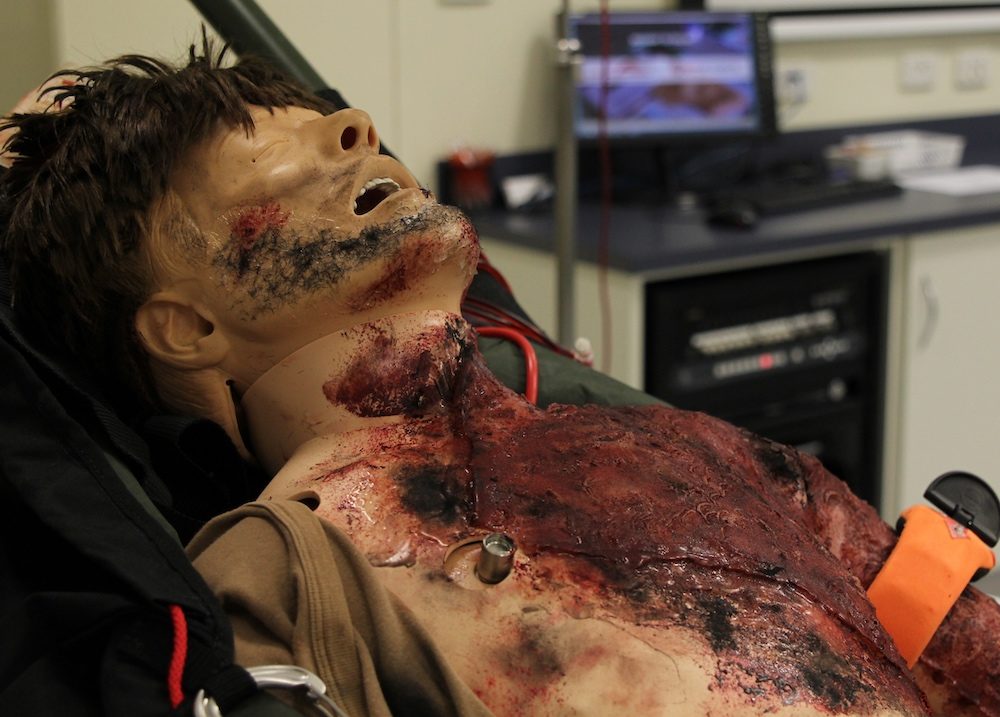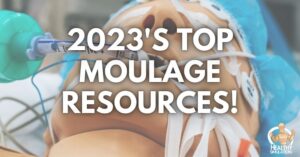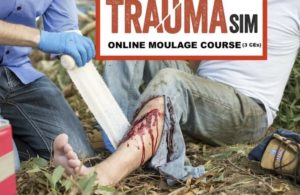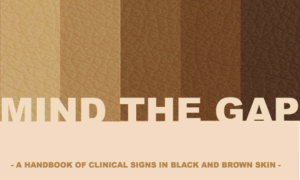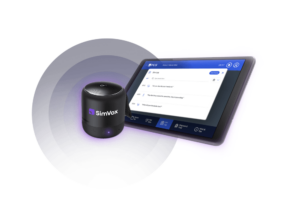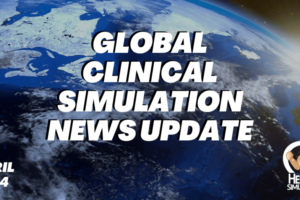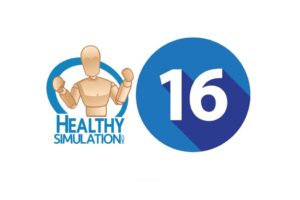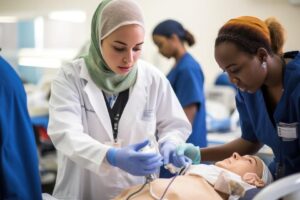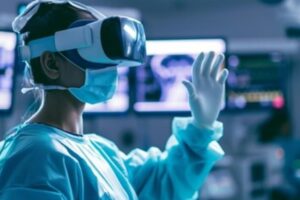About Moulage – Resources, Kits, Recipes & More
Moulage is a unique technique within the field of Healthcare Simulation that pairs artistry with medical accuracy so that healthcare learners can have the highest level of realism when treating simulated patients. Moulage can help learners suspend their imaginations and experience the vast array of emotions that can come with providing emergency care, all while practicing how to exert calm and confidence and maintain control of any medical scenario. Simulated injuries made possible by Moulage can provide added value to training sessions for emergency response teams, military personnel, and healthcare learner programs. Healthcare professionals who focus on education and training via Clinical Simulation methodologies should be familiar with various Moulage concepts and techniques, as well as how they can elevate any learning experience.
The History of Moulage
Moulage is originally a French word for molding or casting. In modern times, it has become synonymous with the adornment of Manikins with simulated illnesses or wounds to better train healthcare professionals. Using Moulage in the healthcare sphere began around the 19th century when instructors took molds of real-life medical cases to help demonstrate illnesses or wounds to future medical students. The tradition has continued to the present day.
Sponsored Content:
In medical simulation Moulage, wardrobe and props are combined with medical simulators to provide assessment clues to healthcare students and professionals. The different varieties of Moulage can enhance realism for learners. A wide range of healthcare professionals—from EMS to firefighters and military personnel to other first responders—utilize trauma Moulage, which can be particularly gory. Trauma Moulage can help learners become better accustomed to visualizing distracting injuries and overcoming their initial aversion. In this way, trauma Moulage can help healthcare trainees learn to focus on quickly triaging and assessing a patient, to reduce morbidity and mortality.
Another form of Moulage, medical Moulage, is more commonly used by nurses, physicians, surgeons, and other primary care providers. Medical Moulage can help medical professionals practice certain skills, like draining an abscess or recognizing certain conditions, such as skin infections.
Understanding the Fundamental Importance of Moulage
The level of realism presented by Moulage products can be pretty shocking, but is necessary to train Healthcare Simulation learners about what to expect in real-life situations. For example, when a person first sees a painful, distracting injury on another human being, their response can be one of dread, anxiety, or fear. Their logic and decision-making processes and ability to access critical medical information when it’s most needed can be hijacked by their sympathetic (or “fight or flight”) response. However, through repeated exposures to injuries or patient presentations, Medical Simulation with Moulage can make jarring injuries less startling when they are encountered in real clinical scenarios. This means that healthcare professionals will be better prepared to take care of patients quickly and appropriately.
Sponsored Content:
Simulated Scenarios that Can Benefit from Moulage
One of the most obvious ways Moulage can enhance the learning experience is in the case of trauma. Being told that a patient simulator has experienced a gunshot wound (and trying to picture this mentally) is much different than actually seeing, and responding to, the gunshot wound in the flesh. Trauma Moulage is considered a more complicated Moulage technique, and it usually requires a great deal of preparation.
While almost every simulated patient case dealing with trauma can be made much more realistic using Moulage, many simulation professionals are unaware of the subtler ways Moulage can enhance a non-traumatic medical scenario. Medically simulated representations of internal illnesses (such as a ruptured appendicitis or an impacted kidney stone) do not always require the use of makeup. Yet, simple moulage techniques, such as the application of water to demonstrate sweating due to fever or pain, or the use of blue watercolors on a Manikin’s fingertips or lips to cue hypotension or hypothermia, can be used for even the most elusive presentations.
Click Here to Connect to Leading Moulage Training and Product Vendors!
In the present day, as new viruses circulate the globe, medical Moulage can even help healthcare learners increase their situational awareness and practice recognizing illnesses that they have never actually encountered, such as the Monkeypox virus. Medical Moulage can also help educators teach their students about uncommon manifestations of new viruses, such as “COVID toes” and other dermatologic conditions associated with the SARS-CoV-2 virus.
Adopting Moulage Techniques in a Healthcare Simulation Setting
Moulage training is a crucial component of running an effective Simulation Center. When healthcare educators take the time to include Moulage in their simulation experiences, learners will be provided with the most realistic patient representations possible. Increased realism tends to improve learning outcomes, as participants find themselves captivated by the experience that closely resembles potential clinical realities.
Many educators find themselves wondering when they should use Moulage. The answer is that any time an educator asks a learner to mentally picture a patient presentation (i.e., “Imagine the patient has [condition]”), they could likely augment this presentation with Moulage. Instead of trying to hold onto a mental cue, having a visual representation is a much more realistic way to learn, as patients typically don’t arrive at most clinical environments with a yellow sticky note on their leg that says “bleeding here.” Instead, Moulage can help learners practice doing a complete physical assessment and drawing their own conclusions. By showing learners a representation of the intended “condition,” clinical educators better enable self-directed learning during patient assessment and care.
Moulage kits for Healthcare Simulation can be purchased or built to increase the speed and efficiency of Moulage application. Moulage kits are toolkits that hold molding equipment, moulage recipes, makeup applicators, adhesives, and other cleaning supplies. Healthcare Simulation technology specialists and other healthcare educators planning on taking the craft seriously will want to purchase and build their own personal Moulage kit.
How to Start Implementing Moulage Techniques
Continuing education can be beneficial for healthcare educators who would like to introduce a Moulage practice to their Simulation Centers. Moulage workshops usually occur at Healthcare Simulation Conferences throughout the year, most notably at SimGHOSTS events worldwide.
HealthySimulation.com is dedicated to providing the latest Moulage Training news and #MedSim resources from around the world. To follow along, sign up for our free medical simulation email newsletter, follow @HealthySim on Twitter and @HealthySim on Facebook, or join our HealthySim LinkedIn Group!
For healthcare educators unable to attend an in-person education session to learn Moulage techniques, the Healthcare Simulation community has a number of Moulage recipes to make things easier. These common domain recipes include techniques for frequently encountered illnesses, infections, or traumatic injuries. Healthcare Simulation professionals interested in an official Moulage recipe book should read this review on the Moulage recipe book by Bobbie Merica, titled Medical Moulage: How to Make Your Simulations Come Alive. Written in 2009, this comprehensive book helps users make their Simulations come alive by offering 300 special effects recipes and scenarios for field and Clinical Simulations. Many have called this the definitive book on Moulage. It will provide essential guidance for any Healthcare Simulation professional looking to incorporate the practice into their Simulation scenarios.
Applying Moulage Techniques in a Budget-Friendly Way
While many Simulation Centers and educational institutions use funds to purchase high-fidelity Moulage products, these can be cost-prohibitive, depending on the setting. New learners can ease into a Moulage practice using home products to create Moulage of their own. Everyday products that can be used to create Moulage in a DIY fashion include petroleum jelly, baking soda, cocoa powder, jello, paper towels, and eyeshadow. Together, these products can be used and manipulated to create Moulage representing injuries such as gunshot wounds, burns, scrapes, lacerations, eviscerations, bites, ulcers, exposed muscle, and much more—adding to the realism of any simulated learning experience.
Medical Moulage Recent Articles:
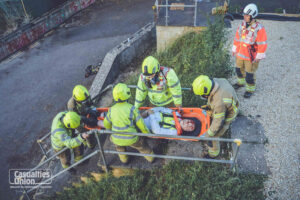
Casualties Union Celebrates 80 Years of Casualty Simulation
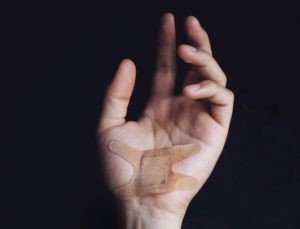
How to Use Low-Budget Props, Moulage to Set Healthcare Simulation Scenes
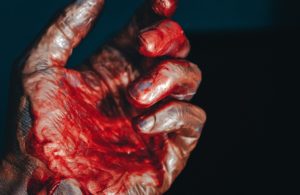
Celebrate Halloween with Realistically Spooky Healthcare Simulation Moulage Videos
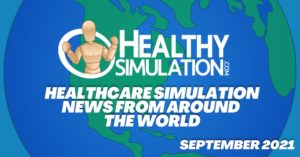
Latest Clinical Simulation News From Around the World | September 2021

Moulage Secrets: Red Pigment Stain Test for Laerdal Simman 3G
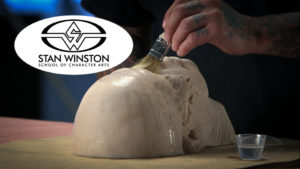
How To Paint Realistic Silicone Skin: Online Moulage Course from Stan Winston School
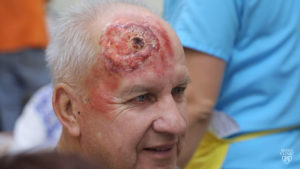
Mayo Clinic Moulage Video Shares the Art of Making Simulated Patients Real, Plus Upcoming Instructor Courses!
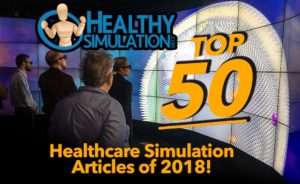
Top 50 Healthcare Simulation Articles of 2018!
Sponsored Content:
